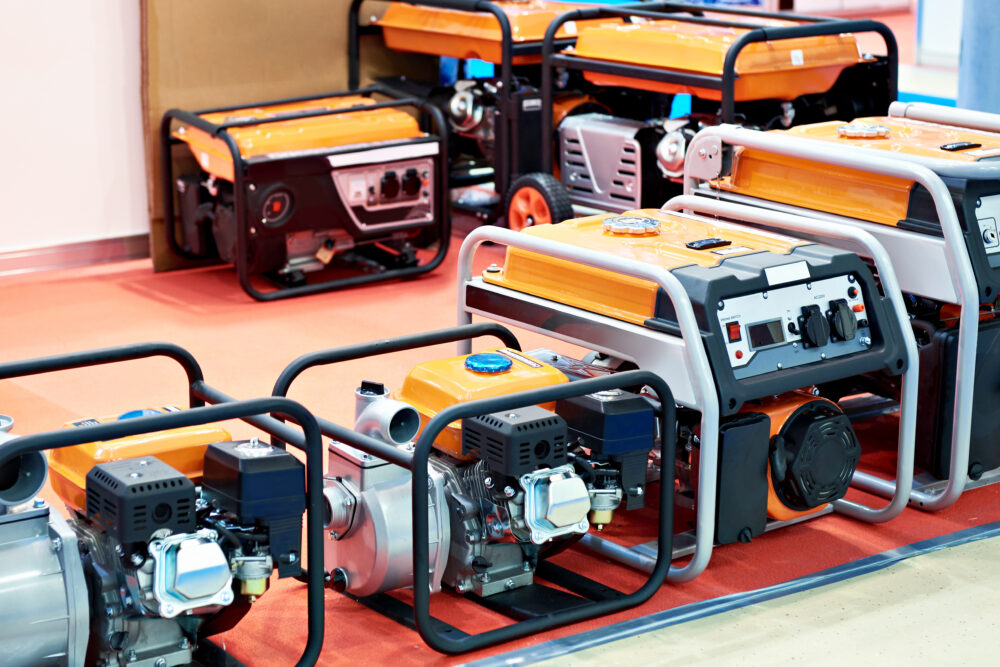Generators Are Largest Cause of Carbon Monoxide Poisoning Deaths: CPSC Report
New CPSC report links 40% of all consumer product-related carbon monoxide poisoning deaths to generators, which can be deadly when used in enclosed or unventilated spaces.

Federal safety officials indicate that carbon monoxide poisoning deaths involving generators have increased every year, and were the largest cause of non-fire related poisoning deaths in 2020.
On February 26, the U.S. Consumer Product Safety Commission (CPSC) released annual estimates for non-fire carbon monoxide deaths (PDF) linked to consumer products in 2020. The report revealed that generators caused more carbon monoxide poisoning deaths in 2020 than any other consumer product, contributing to an upward trend in product-related deaths since 2010.
Carbon monoxide poisoning deaths have steadily increased over the past 11 years, with engine-powered products, particularly generators, being the largest cause, the CPSC report indicates. Between 2012 and 2019, carbon monoxide poisoning deaths rose annually for seven consecutive years, surpassing 200 deaths in 2018, for the first time since 1999. In 2019, the number of deaths increased further to 254. While the number of deaths slightly decreased to 211 in 2020, they remained high compared to previous years.

Learn More About
Exposure to Carbon Monoxide Gas May Cause Permanent Brain Damage, Serious Injury or Death.
Learn More About this Lawsuit SEE IF YOU QUALIFY FOR COMPENSATIONGenerator Carbon Monoxide Poisoning Risks
Often referred to as “the invisible killer,” carbon monoxide is a toxic gas produced when oil, wood, coal, kerosene or fuels are burned. The gas is especially dangerous because it does not have a color or odor and can be impossible to detect until it is too late.
Symptoms of carbon monoxide poisoning are similar to those seen in the flu, but exposure to high amounts of carbon monoxide can cause an individual to lose consciousness, which may prolong exposure and result in permanent brain injury or death.
More than half of carbon monoxide poisoning deaths in the U.S. occur in the colder months of the year, when families lose power and use temporary heating to warm their homes. Gasoline-powered generators are often used during weather-related power outages, and the CPSC indicates these products can produce as much carbon monoxide as hundreds of cars.
Since 2010, generators have been associated with approximately 796 non-fire carbon monoxide poisoning deaths, accounting for 40% of all carbon monoxide deaths related to consumer products.
Calls for mandatory safety rules for gas generators arose after carbon monoxide deaths linked to the products reached a record high in 2019. In response to growing concerns, the CPSC held a public hearing last year, which focused on developing new safety standards.
A report released in April 2023 revealed that many gas generator carbon monoxide poisoning deaths could have been prevented with automatic shut-off features and carbon monoxide detector warnings. The agency discovered that many manufacturers fail to equip generators with automatic shut-off features that could prevent carbon monoxide buildup, despite their adoption as voluntary safety standards in 2018.
Carbon Monoxide Poisoning Deaths Involving Generators
In the latest report, CPSC officials indicate that generators, lawn mowers, leaf blowers, tillers, power washers, and snow blowers were the largest cause of non-fire-related carbon monoxide poisoning deaths in recent years. Those products were responsible for nearly half of all carbon monoxide poisoning deaths that occurred between 2018 and 2020. They also caused more fatalities in the last 11 years than heating appliances, which have historically been the leading cause of non-fire poisoning deaths.
Engine-powered products, including generators, accounted for 52% of product-related carbon monoxide deaths in 2020. According to the report, approximately 40% of deaths that occurred in 2020 were associated with engine-driven products, including generators. Among the 84 deaths, approximately 67 involved a gasoline-fueled generator, and two deaths involving multiple products included a generator.
There has been a 58% increase in the three-year average mortality rate for consumer product-related carbon monoxide poisoning deaths. The report revealed generators played a significant role in that surge, with the three-year average mortality rate increasing from 4.34 in 2000 to 6.84 in 2019.
Carbon Monoxide Poisoning Prevention Safety Recommendations
In the press release issued alongside the report, CPSC officials outlined a series of steps for consumers to follow to prevent fatal carbon monoxide poisoning. Those recommendations include:
- Install a battery-operated carbon monoxide detector or an alarm with battery backup on each level and outside separate sleeping areas of the home. Officials indicate interconnected alarms are the best.
- Test carbon monoxide detectors and alarms every month and replace batteries if needed, to ensure they are always working properly.
- Ensure generators are only used outside, at least 20 feet away from the home, its porch, or carport, and never inside of a home, garage, basement, shed, or other enclosed space.
- Purchase a generator with an automatic shut-off safety feature that will turn off the generator when high levels of carbon monoxide are detected. Models that are certified to the latest PGMA G300-2018 standards reduce deaths by 87%, and those with UL 2201 standards reduce deaths by 100%.
- Ensure all fuel-burning systems, including furnaces, boilers, fireplaces, wood stoves, water heaters, chimneys, flues and vents are well-maintained and inspected by a professional.
- When using electric portable heaters, consumers should ensure they are never unattended or running while they are sleeping, and should always be placed on a stable surface, at least three feet away from flammable objects.
Get more articles like this sent directly to your inbox.
"*" indicates required fields
1 Comments






StephanieMarch 2, 2024 at 12:15 pm
Re 'Carbon Monoxide Poisoning Deaths Involving Generators In the latest report, CPSC officials indicate that generators, lawn mowers, leaf blowers, tillers, power washers, and snow blowers were the largest cause of non-fire-related carbon monoxide poisoning deaths in recent years. Those products were responsible for nearly half of all carbon monoxide poisoning deaths that occurred between 2018 [Show More]Re 'Carbon Monoxide Poisoning Deaths Involving Generators In the latest report, CPSC officials indicate that generators, lawn mowers, leaf blowers, tillers, power washers, and snow blowers were the largest cause of non-fire-related carbon monoxide poisoning deaths in recent years. Those products were responsible for nearly half of all carbon monoxide poisoning deaths that occurred between 2018 and 2020. They also caused more fatalities in the last 11 years than heating appliances, which have historically been the leading cause of non-fire poisoning deaths.' This is a very interesting comment but surely we can only believe it's true if all deaths were tested for carbon monoxide?